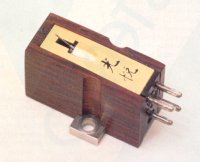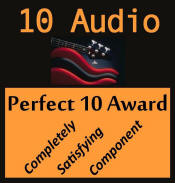From the Urushi review:
“…with the Urushi, the feeling of arriving at a plateau of satisfaction is clear.”
Imagine walking up an incline, like a highway ramp. Near the bottom of the ramp, you pass the Koetsu Black. Walk a little farther and there is the Rosewood. A short time later you pass the Rosewood Signature and up ahead you see the Urushi. You reach the Urushi and find that you can go no farther. The ramp ends.
Next to you is another ramp. The other ramp does not start at the ground, so you can not just walk up it. The beginning of this ramp is a sharp vertical face. The only way to reach it is to jump over. You jump. You can not go down, so you begin walking up the ramp. After a time, you come upon the Rosewood Signature Platinum. The ramp continues up, but in just a short distance the path is lost in fog, so you can not see how far or how high it might go.

The rules are different on this path. What you begin to see with the RSP is a cartridge that has the life-like midrange we have come to expect from the Koetsu name, but in all other areas is a significant departure from the cartridges on the other ramp. What you quickly understand, rather shockingly, is that the Rosewoods and other 0.6 mv Koetsus are all basically the same cartridge, getting better as you move up the line. On this new path you are on, the Platinum Path, cartridges play by different rules. The RSP is the beginning of a different level or class of performance, with far greater potential. How far? The improvement of the RSP over the Urushi is similar in magnitude to the improvement of the Urushi over the Black. Here’s the fun part: the RSP is at the bottom of the path you are on now.
So what makes this cartridge so special and worth an extra $1500, and possibly a different phono stage that can provide enough quiet gain for the 0.25 mv output? This is serious money, and after all, the Black makes very enjoyable music for thousands of dollars less. Here’s what: the upper midrange and treble are simply extraordinary. Where there was a hint of hash and a tendency towards white-noise in the treble reproduction of the better, non-platinum Koetsus, the RSP’s high frequencies seem to be unlimited, pure, clear, clean and open. Bells and triangles become amazing in their purity. The delineation of individual instruments is realistically precise and easy to hear. Each instrument, voice, and all other sounds are separate from everything else, making each one much easier to follow, while, almost in contradiction, making the entire presentation more whole and integrated. The dynamic performance is improved, too, although to a smaller degree than the improvements in the upper frequencies. Soundstage width is just slightly better than the Urushi, but depth almost doubles.
The bass of the RSP is significantly tighter and with better definition and detail, although still not in the same league as a Clearaudio Insider. Where the non-platinum Koetsus demand partnering components with excellent bass capabilities so they will not sound loose and relatively undefined, the RSP merely suggests good bass performance is needed from the rest of the system. If you are using this cartridge, chances are that your system already does bass quite well. The bass is somewhat better than from a Sony XA7ES cd player. Not the tightest bass on an absolute scale, but entirely adequate and satisfying. Bass definition noticeably improved when playing with the Graham 2.2 arm instead of with the SME V.
The overall sound quality with the RSP at the head of the playback chain is quite special, and once you experience this level of natural high frequency reproduction in your system, there is no going back. You might do what I did, and decide that whatever faults your system has when using this cartridge are things you will fix, because the cartridge is going to be the cornerstone, the reference, for making all other decisions about component changes and upgrades in the future. Thankfully, current RSPs have tapped mounting holes, so installation is much easier than with the earlier, unthreaded cartridges. Break-in is typical Koetsu: 150-200 hours. Those are long, lonely hours, too, as you wait for the magic to blossom. As implied above, gain can be an issue if used with phono and line stages that are unable to provide enough quiet gain. Look for a phono signal-to-noise ratio of at least 80 dB, and preamps or amps with a S/N greater than 90 dB and you should be fine.
The RSP is now helping to evaluate a Groove phono stage, set for 100 ohms input impedance and 60 dB of gain. I have recommended the RSP to several people, and their reactions were similar to mine. Without presenting a mini-review on the combination of the RSP and Groove, let me just share with you my reaction upon hearing it: “Oh… my… goodness. THIS is what audio is all about!” So now I am going to try to peer into the fog while wondering how good a Jade Platinum might be.
If at all possible, try the RSP. It IS worth a second mortgage!
Overall Rating: 10 LPs

System:
Kuzma Stabi Reference turntable, SME V and Graham 2.2 tonearms
Audio Research LS16 mk 2, LS25 mk 2, Rowland Synergy IIi with Cadence phono, Ayre K3x, and other preamps
Tom Evans Microgroove+ and Groove phono stages
Ayre V5x, Bryston 3BSST, Atmasphere M60 amps
Fostex ‘S-168’ speakers with Perfect Subwoofers
Acoustic Zen Satori speaker cables, various ICs
PS Audio Ultimate Outlet on 20a dedicated power lines
